In an age of never-ending comparisons, “which product is best for me”, “should I buy product A over product B”, and “top 10 products to buy for blah blah blah”, consumers are constantly in search for the best of everything.
For photographers, gear is often the product to which we incessantly research and read about. Prior to the days of the information superhighway (anyone remember that term?) people researched cameras and lenses by reading magazines, newspapers, or by visiting a camera store and handling them for themselves.
For film photographers, when you have the camera or lens that you want (or can afford), you still need film, and a way to develop it so there’s a whole other realm of comparisons to be made.
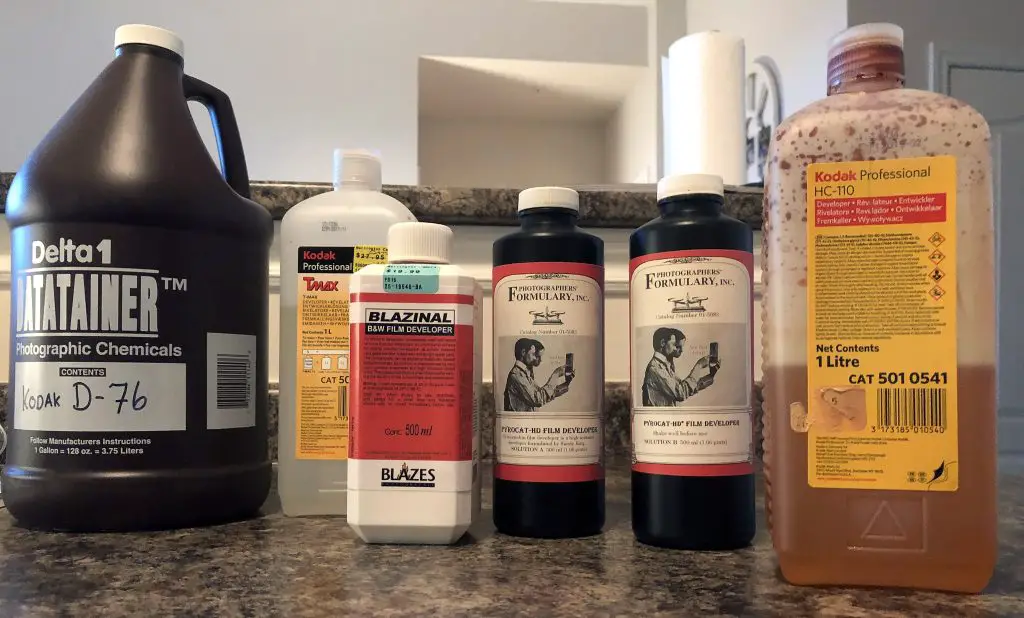
Today, with film usage slowing creeping towards popularity again, there are many excellent sites out there comparing current film emulsions and the chemicals that you can buy to develop them yourselves. These sites are filled with insightful commentary, A/B comparisons, and tutorials for how best you can achieve quality results yourself.
But film isn’t new. People have been doing this for a long time, and there’s already plenty of websites with development tips on them, but why reinvent the wheel when we can learn from those same comparisons and commentary that has already been done in the past.
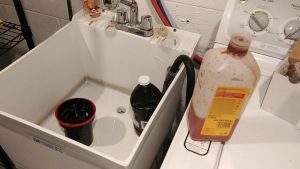
In this week’s Keppler’s Vault, I bring to you a 12-page article from the March 1961 issue of Modern Photography called “Which Film? What Developer?” by John Wolbarst. Below it is a bonus 4-page article from the October/November 1963 issue of Camera 35 which more specifically looks at high-acutance developers like Kodak Microdol-X and a couple homebrewed chemicals.
The article starts out with a claim that is still as true today as it was 58 years ago when it was first printed, which is that no commercial photofinisher can possibly afford to process your film with the care and attention that you can…if you know what you’re doing. Only you know whether the film you shot was done in a dark dingy bar that would benefit from a little more developing to bring out the grain you are looking for. Perhaps you know your camera tends to overexpose highlights a little and you want to compensate for that. Maybe you aren’t a fan of very high contrast images and like bringing out shadow detail in your images. These are all things you can do yourself with your film that a retail film lab won’t take into account.
The article goes a good job of covering the basis for home black and white film developing. It explains the difference between a single shot developer and one you can use over and over, it touches upon what kind of equipment and materials you need, and it emphasizes the need for a consistent processing technique.
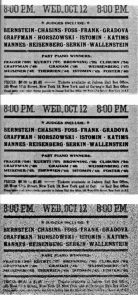
This might all sound intimidating to the novice who has yet to develop their own film, but as someone who was once there, I can wholeheartedly say that doing your own film developing not only saves you a TON of money, but is extremely rewarding, and a lot of fun. Plus, for someone like me who is constantly rotating through many different cameras for reviews on this site, it affords me a cost-effective way to experiment with cameras that are of questionable working condition by shooting some film in them and not worrying that if I get no images, I haven’t wasted much money.
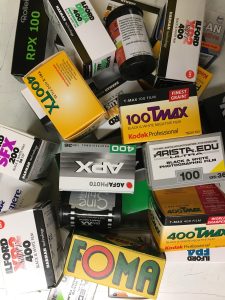
Pages three and four of the article talk about selecting the right film. Of course the choices of film in 1961 aren’t the same as they are today, but there are similarities. You can still get ultra slow ASA 6 speed cinema film from places like the Film Photography Project, or Rollei RPX 25 is a “spiritual successor” to Kodak Pan-X and AGFAPan 25, Ilford Pan 50 is still widely available as a low grain medium speed film, and of course there’s still Kodak with TMax 100, 400, and 3200 still available.
Next is a short intro to the various developers that are mentioned in the article. There is about a 50/50 split between single shot developers that you throw away after each use, and conventional developers which can be reused. Many of these developers are no longer available, but long standing favorites like Rodinal, Kodak D-76, and Ilford ID-11 can still be purchased today.
A notable omission is the absence of my preferred developer, Kodak HC-110 which wasn’t introduced until 1962, a year after this article was written.
Pages seven through ten are two separate full page tables breaking down recommended developing times for various films available, their concentrations and times required to get appropriate results. Of course with any black and white developer, recommended concentrations and times are merely starting points that you may adjust depending on your specific requirements.
Not all of the information in these two articles is relevant today, and there are certainly easier tutorials out there for the beginner, but it’s interesting to see what challenges people faced nearly 60 years ago when these two articles were written. Do we have it easier today or not? You be the judge.
Here’s a second article with a little more information about Black & White developing from a 1963 article of Camera 35 magazine.
All scans used with permission by Marc Bergman, 2019.

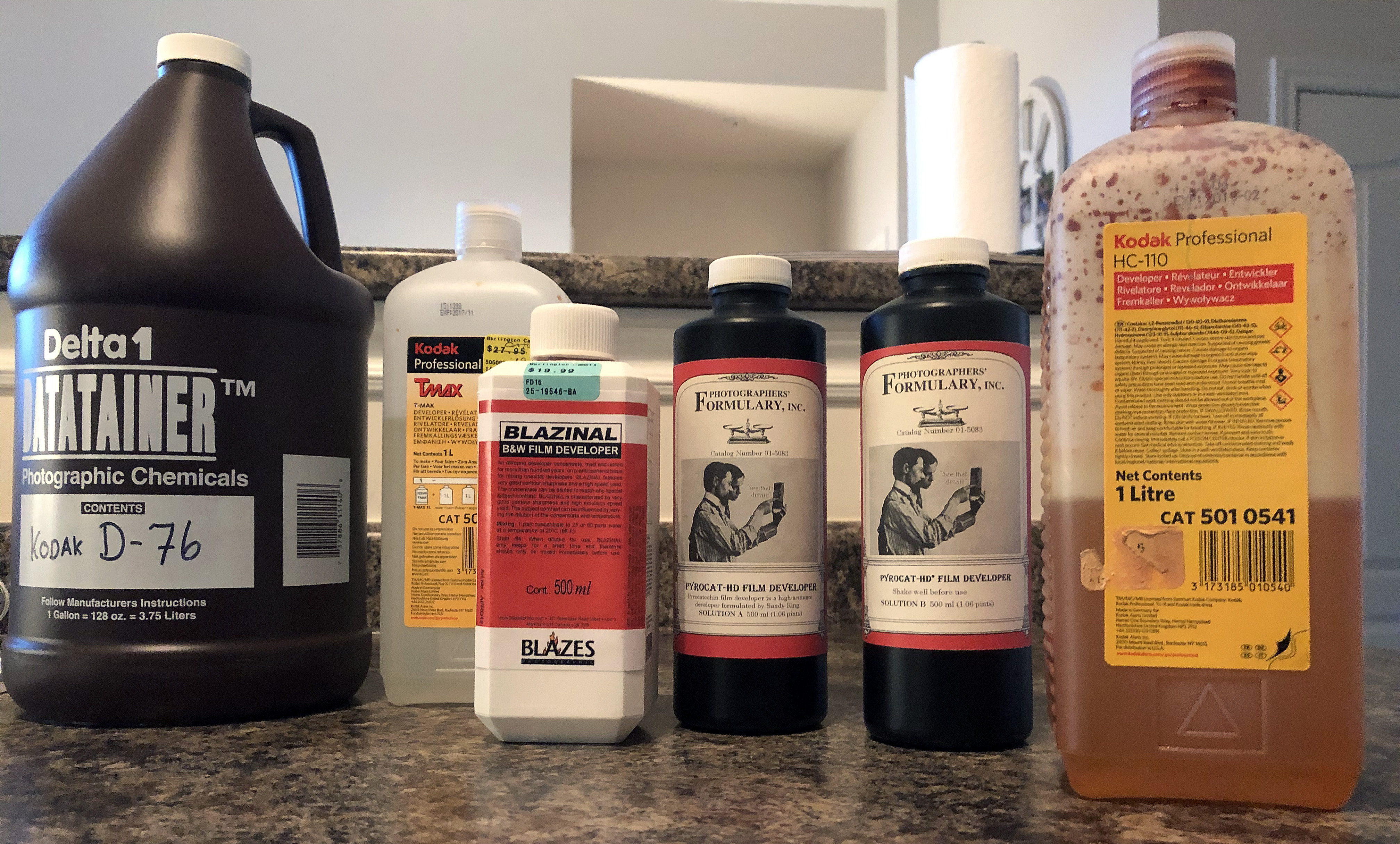
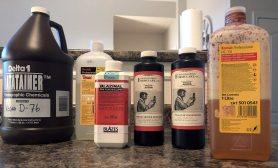
My favourite combination was FP4 and Paterson’s Aculux from around the mid-1970’s. It produced really sparkling and sharp MF negatives with a smooth tonal gradation and fine grain. Sadly, Aculux is no longer available. Before this, and especially for 35mm film, I used Acutol, an acutance developer. For the original Tri-X it was ID11/D76. Once I’d established how these combinations worked together I never changed film or developers.
When I was a college student, long on “what does this do?” or “Can I use that for this?” I looked for a developer that could process a broad spectrum of black-and-white 35mm films available from Freestyle Sales company. They were coy about where some of the “European classc” films came from, so you could be staring at Ilford FP3 or ORWO NP21. I selected D-76, since this “ex-motion picture film developer” listed developing times for Ilford, Kodak, or DuPont films. As for Agfa or ORWO films, Rodinal worked it’s magic to create that “looks like a 1930’s film” look. Kodak HC-110 was a crap shoot at the time, though the 1:31 dilution could get you within contact sheet density. Acufine Inc. promised “speed gains” for Tri-X Pan when flash units couldn’t cover the subject or were forbidden. Those were interesting days as I wondered if Diafine’s A and B bath would work on musicians photographed at dimly-lit concerts.
On the other end of the “lines/millimeter” measure, the H&W Control system promised (and delivered) “more than you can see” detail. I later found out that the film was Agfa Copex Pan Rapid and the developer was a “use it in 30 minutes!” Phenidone formula. Looking at the possibility of creating “black-and-white slides,” I ran the original monochrome negatives through the slide copier and processed Kodak High Contrast Copy film in Dektol paper developer 1:1. This way, I still had the originals and I could enlarge parts of them at will. Those were very interesting times. Then I looked at Ektachrome Slide Duplicating film and the Cibachrome process, but that’s another tale.
In the second article the FX 1 recipe is similar to the Beutler recipe aka Tetenal Blau (Blue). I didn’t know much about Beutler, and found it in old newsgroups; it was famously good for developing slow films such as Agfa KB 17, and later films such as Efke 25, Agfapan 25 etc.
Buetler Recipe
http://spyderpix.com/?p=355
https://filmdev.org/recipe/show/5959
http://real-photographs.co.uk/neofin-red-and-blue-revisited/
http://www.martinzimelka.com/homepage/Blog/Entries/2011/10/30_Home_made_developer.html
http://thegoldenageofsilver.blogspot.com/2015/06/simple-alchemy-supplemental-beutlers.html
http://thegoldenageofsilver.blogspot.com/2015/06/simple-alchemy.html
This is great info, thanks for sharing Cheyenne! You got to figure that there has to be a finite number of ways you can develop film and over the course of the years, many custom recipes that people have used, have been based off earlier recipes like the ones in this article. That the Buetler recipe is similar only proves that people started with a base and then tweaked it over the years to fit their needs. Still, I think it’s cool to read these old articles to hear what people were doing back then!
Mike,
I’ve been a fan for a couple years, mostly reading your notes on subminiatures and lab work.
The ‘Modern Photography’ and ‘Camera 35’ articles won’t download for me, and I’m quite interested in them.
If you have a continuing interest in photography things small, you might take a look at ‘Submini-L,groups.io’ where there is renewed interest in submins.
Thanks,
Terry
[email protected]
Terry,
I just checked that article and the PDFs won’t open for me too. It looks like the plug-in I use to display PDFs is malfunctioning. I’ll have to do some troubleshooting to find out what’s happening, but in the meantime, here are direct links to the actual PDFs which should still open fine. Thank you for bringing this to my attention.
https://mikeeckman.com/wp-content/uploads/2019/10/KepplerWFWD.pdf
https://mikeeckman.com/wp-content/uploads/2019/10/KepplerBWProcessing.pdf